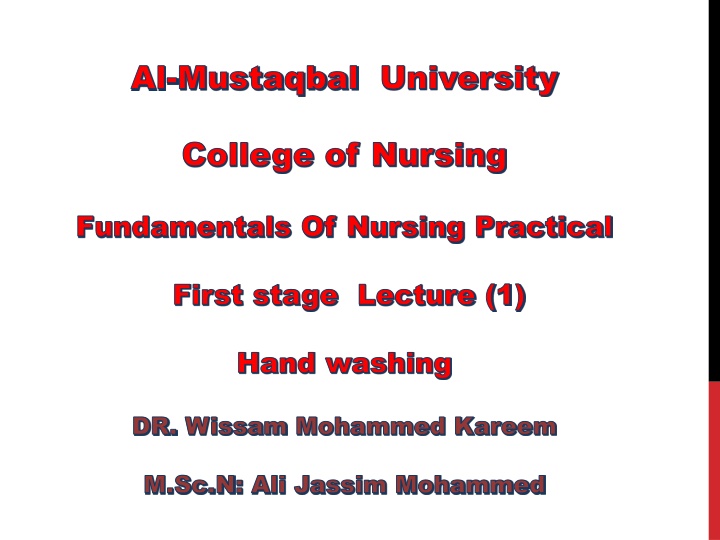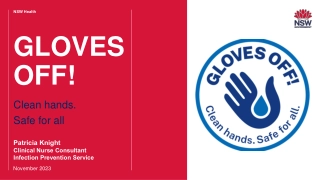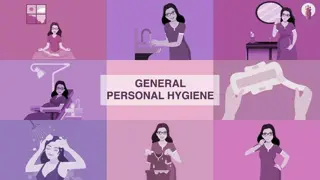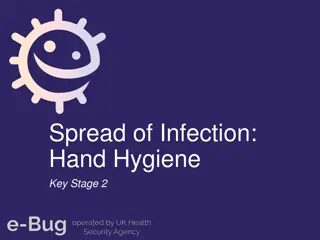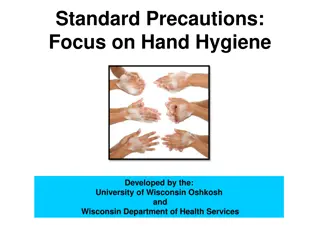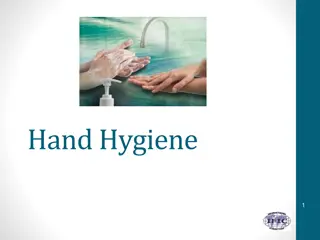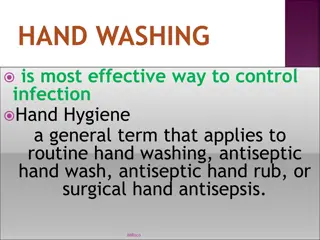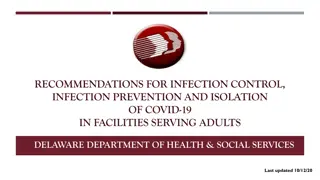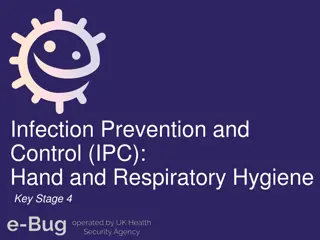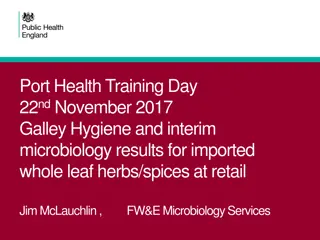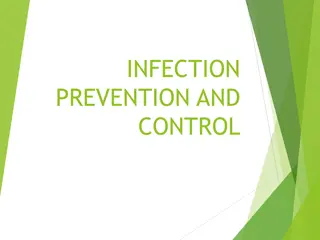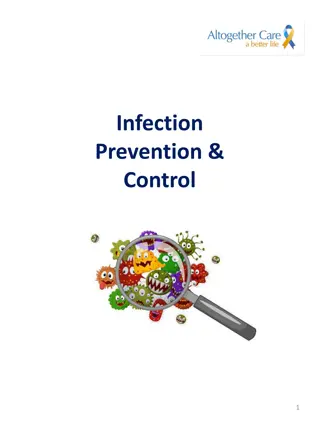Fundamentals Of Infection Control and Hand Hygiene
This content covers key concepts in infection control such as sterilization, asepsis, and hand washing techniques. It explains the types of hand washing procedures and their importance in reducing the spread of harmful microorganisms.
Download Presentation

Please find below an Image/Link to download the presentation.
The content on the website is provided AS IS for your information and personal use only. It may not be sold, licensed, or shared on other websites without obtaining consent from the author.If you encounter any issues during the download, it is possible that the publisher has removed the file from their server.
You are allowed to download the files provided on this website for personal or commercial use, subject to the condition that they are used lawfully. All files are the property of their respective owners.
The content on the website is provided AS IS for your information and personal use only. It may not be sold, licensed, or shared on other websites without obtaining consent from the author.
E N D
Presentation Transcript
Al Al- -Mustaqbal Mustaqbal University University College of Nursing College of Nursing Fundamentals Of Nursing Practical Fundamentals Of Nursing Practical First stage First stage Lecture ( Lecture (1 1) ) Hand washing Hand washing DR. DR. Wissam Wissam Mohammed Kareem Mohammed Kareem M.Sc.N M.Sc.N: Ali Jassim Mohammed : Ali Jassim Mohammed
General Concepts Infection:is the growth of harmful microorganisms in body tissues where they are not typically present, leading to potential damage or disease. Microorganisms:are tiny living organisms, such as bacteria, viruses, fungi, and protozoa, that are often invisible to the naked eye and exist in various environments, including the human body. Sterilization: is the process of eliminating all forms of microorganisms, including bacteria, viruses, and fungi, from surfaces, equipment, or environments, typically through heat, chemicals, or radiation.
Asepsis: refers to the absence of disease-causing microorganisms. It is achieved through aseptic techniques, which prevent the transfer of microorganisms. There are two types of asepsis: medical and surgical. Medical asepsis involves practices to limit the number, growth, and transmission of microorganisms, with objects being categorized as "clean" (almost free of microorganisms) or "dirty" (likely contaminated). Surgical asepsis (or sterile technique) ensures the complete absence of microorganisms, including spores, and is used for procedures involving sterile areas of the body.
Hand washing :- Hand washing also known as hand hygiene, is the act of cleaning hands for the purpose of removing soil, dirt, and microorganisms The main purpose of hand washing is to reduce the number of pathogenic (disease- causing) micro-organisms on the skin surface. The World Health Organization (WHO) has "Five Moments" for washing hands of health care team. before patient care (Before Touching a Patient ) before clean and aseptic procedure after exposure to blood/body fluids after patient care ( after Touching a Patient ) after environmental contact (After Touching a Patient s Surroundings )
Types of Hand washing : Routine hand wash: also called Social Hand wash: - Washing hands with water and soap or other detergents (liquid or foam). This will remove 95% of transient micro- organisms from the hands RoutineAlcohol-based hand rub: also called (Disinfection Hand-wash & Hand Sanitizes) Rubbing hands with an alcohol( liquid/foam or gel) This will remove 99% of transient micro-organisms, and some resident micro-organisms. Surgical hand washing :- also called Surgical antisepsis : Hand washing with antiseptic soap or alcohol-based hand rub before operations. This Effective against both transient and resident micro-organisms.
1-Procedure of social hand washing (60 seconds) To perform social hand washing in 60 seconds: 1.Wet hands with clean water. 2.Apply soap and lather by rubbing palms together. 3.Scrub between fingers, back of hands, and thumbs. 4.Clean fingertips and under nails. 5.Rinse thoroughly with water. 6.Dry hands with a clean towel or air dryer.
2- Procedure of alcohol based handrub ( 20-30 seconds) To perform an alcohol-based hand rub in 20-30 seconds: 1.Dispense an adequate amount of alcohol-based hand rub into one palm. 2.Rub palms together to spread the product. 3.Rub the back of each hand with the opposite palm. 4.Interlace fingers and rub between them. 5.Rub each thumb using the opposite palm. 6.Rub fingertips against the opposite palm. 7.Allow hands to dry completely without wiping or rinsing.
B - Surgical scrub with a surgical soap & brush :- (6-9 min) 3- The surgical scrub process with surgical soap and a brush involves the following key steps: 1.Preparation: Gather supplies (surgical soap, brush, sterile towel), remove jewelry, and ensure short nails. 2.Initial Hand Wash: Wet hands and forearms, then apply surgical soap. 3.Scrub Hands and Nails: Use the brush to scrub under nails, hands, and wrists. 4.Scrub Forearms: Continue scrubbing from hands up to elbows in a downward motion. 5.Rinse: Thoroughly rinse hands and forearms with water, keeping hands higher than elbows. 6.Dry: Dry with a sterile towel, avoiding contact with non-sterile surfaces. 7.Optional Second Scrub: Additional scrubbing if required. 8.Sterile Gloves: Apply sterile gloves if necessary. The goal is to thoroughly clean and sterilize hands, wrists, and forearms to minimize infection risks during surgery.
